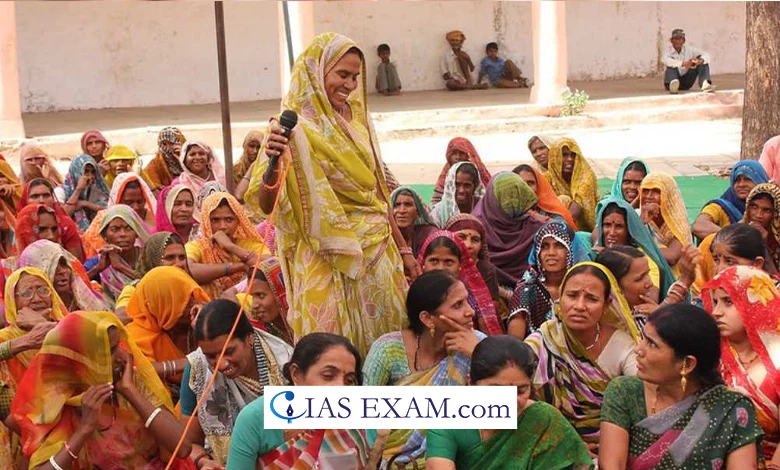Daily Current Affairs for UPSC
Women in Panchayati Raj Institutions
Syllabus - Governance [GS Paper-2]

Context
Elected Women Representatives of Panchayati Raj Institutions have recently participated in the United Nations Commission on Population and Development (CPD57) Side Event: “Localizing the SDGs: Women in Local Governance in India Lead the Way” at New York.
Status of Reservation for Women in Panchayati Raj Institutions
- The Constitution 73rd and 74th Amendment Acts, mandated the reservation of one-third of seats for women in Panchayati Raj institutions and workplaces of the chairperson in any respect ranges of Panchayati Raj institutions, and in urban local bodies respectively.
- Out of the total 1/3rd seats reserved for women, 33% needed to be reserved for the Scheduled Castes and Scheduled Tribes.
- One-third of the seats of office-bearers and chairpersons at all stages had to be reserved for women as properly.
Role of Women in Local Governance
- Over a million women throughout India are elected individuals of around 2.6 lakh gram panchayats in the country.
- Advocacy for Women’s Issues: Women representatives regularly recommend for gender-sensitive policies and packages, addressing problems including women’s health, education, sanitation, and livelihood opportunities.
- Their presence guarantees that the issues of women and marginalized groups are prioritized in local development agendas.
- Decision-making: Women’s participation in local governance has facilitated selection-making techniques which are more inclusive and reflective of numerous community needs.
- They contribute to coverage formula, budget allocation, and implementation of welfare schemes on the grassroots level.
- Community Development: Women in local governance play an important position in riding network development initiatives, such as infrastructure development, environmental conservation, and social welfare programs.
- Empowerment and Social Change: Through their participation in local governance, women advantage management competencies, self belief, and a platform to challenge traditional gender roles and stereotypes.
- Their presence conjures up different women and women to actively have interaction in civic and political processes, leading to broader social empowerment and gender equality.
- Women members of gram panchayats can address the problem of exclusion of the poorest women – by means of attaining offerings to women running in brick kilns, hen farms, plantations, sugarcane harvesting groups, and different migrant businesses.
Suggestions
- One vital way to improve women’s participation in gram sabhas is with the involvement of women’s self-help groups(SHGs).
- Some States, which includes Karnataka, have unique gram sabhas for women in addition to normal gram sabhas.
- At such assemblies, women can enhance their issues to the elected panchayat individuals as well as to the field officials.
- Further, current equipment like data visualisation, text to speech, and smartphone applications can greatly simplify and make accessible key information, without dilution, especially for women members who may be semi-literate or illiterate.
Conclusion
- Overall, women’s participation in local governance in India has caused more inclusive and responsive decision-making, more advantageous accountability, and stepped forward development outcomes on the grassroots level.
- However, demanding situations including patriarchal attitudes, confined sources, and ability-constructing constraints retain to effect the overall realization of women’s ability in local governance.
Source: PIB
UPSC Mains Practice Question
Q. Evaluate the challenges for women in Panchayati raj institutions in India. What are the measures needed to maintain gender equality in the Panchayati raj system in India? (150 words)





.png)



